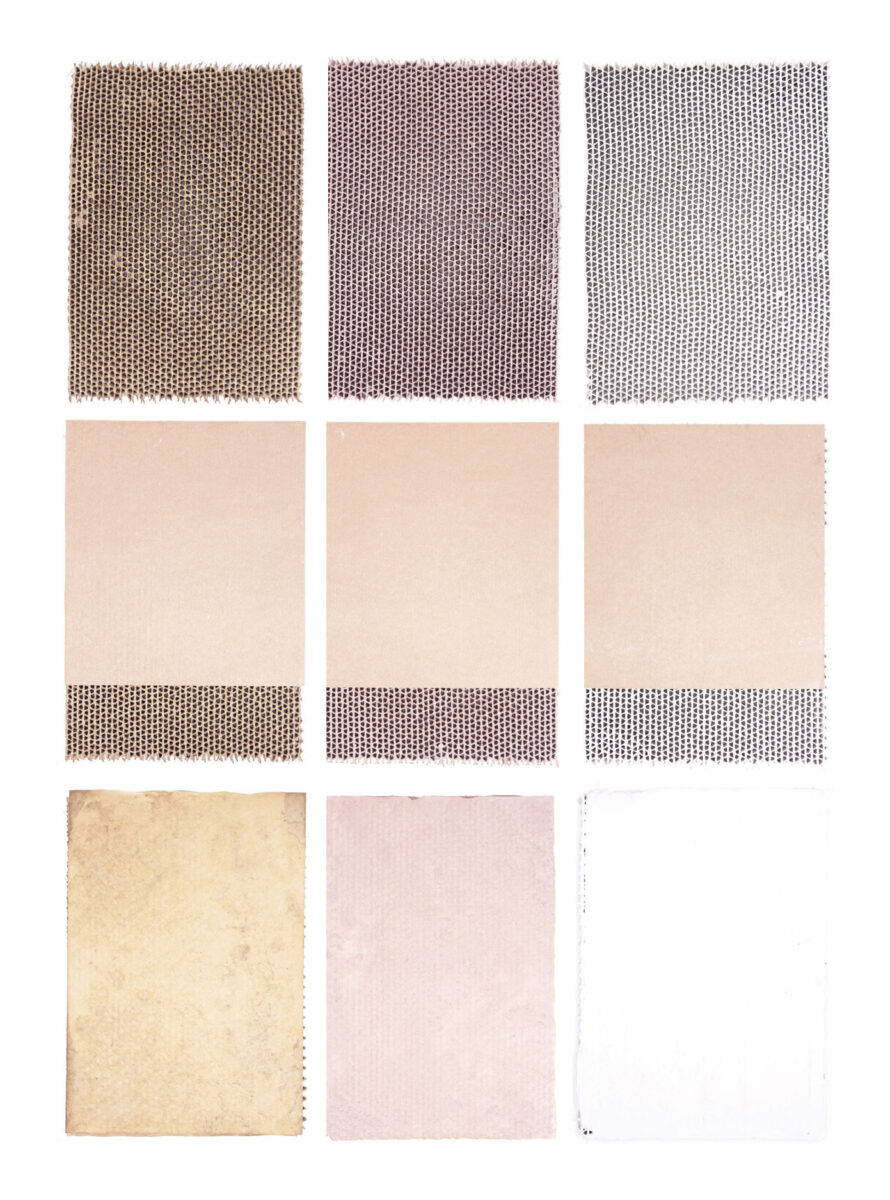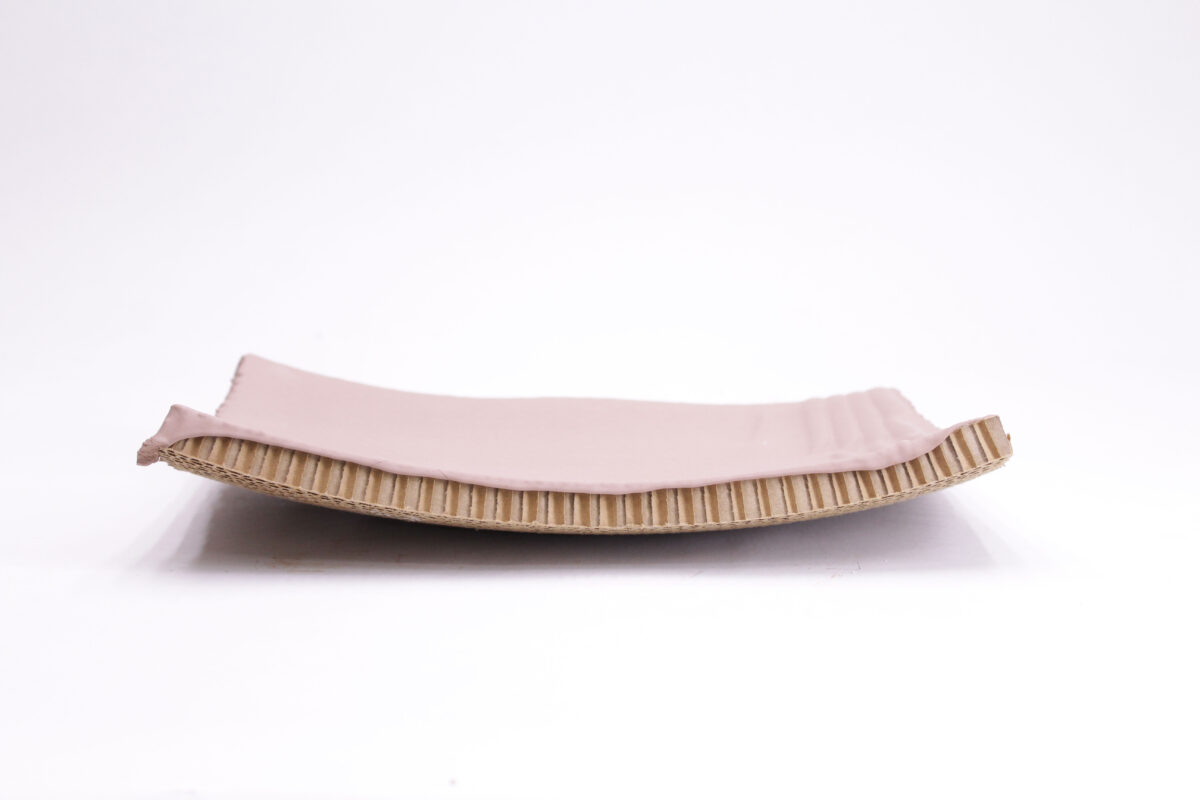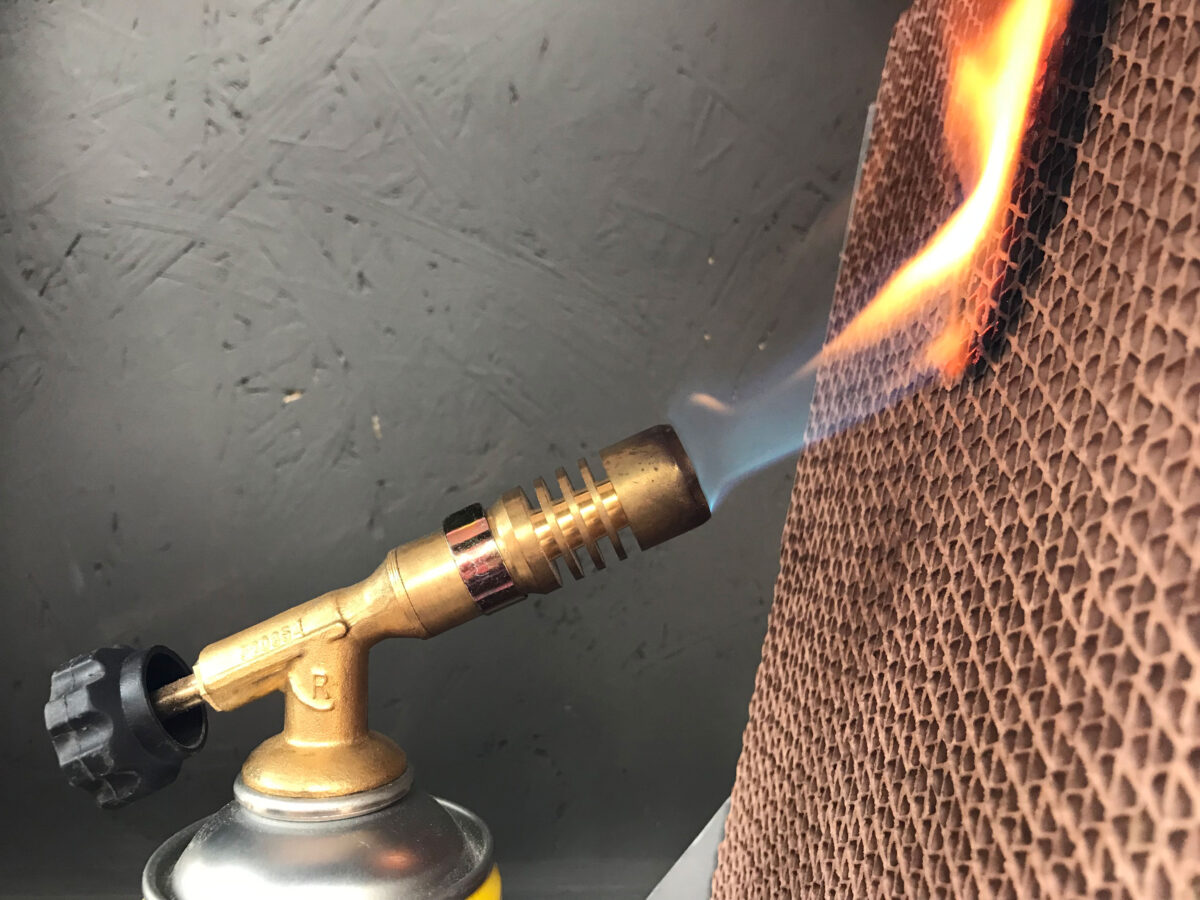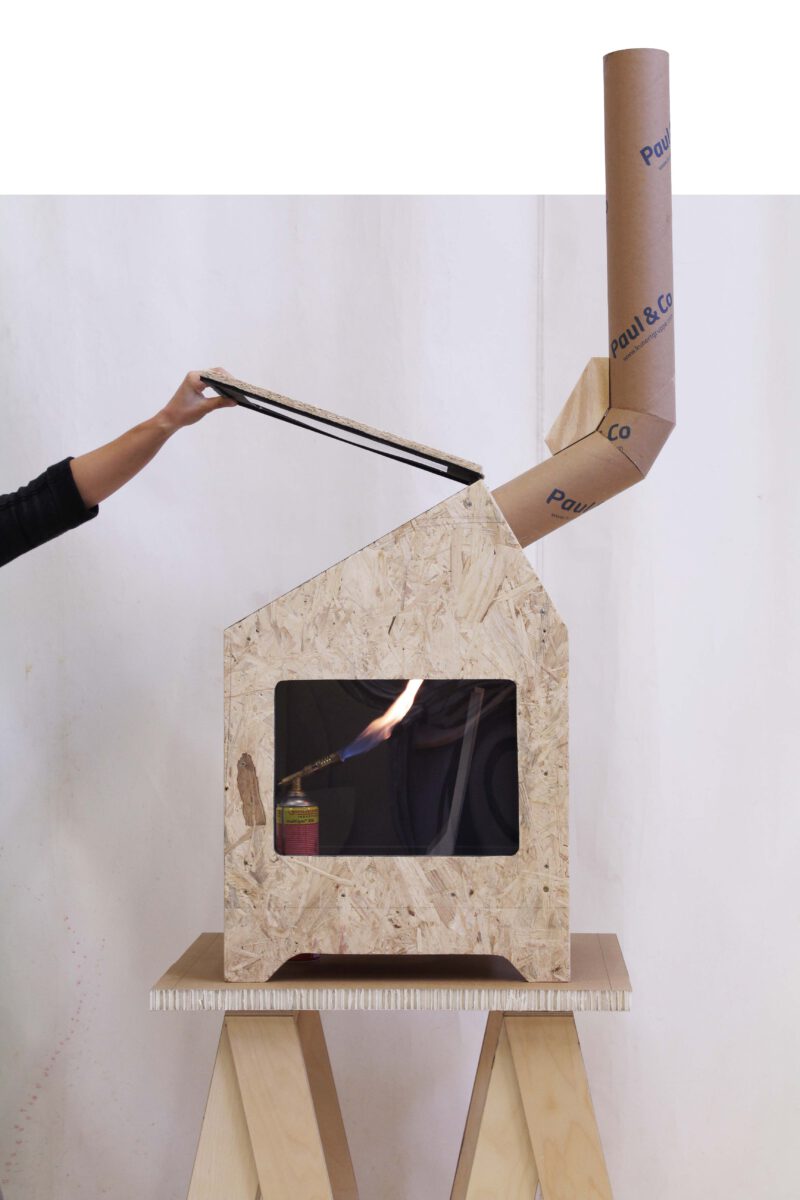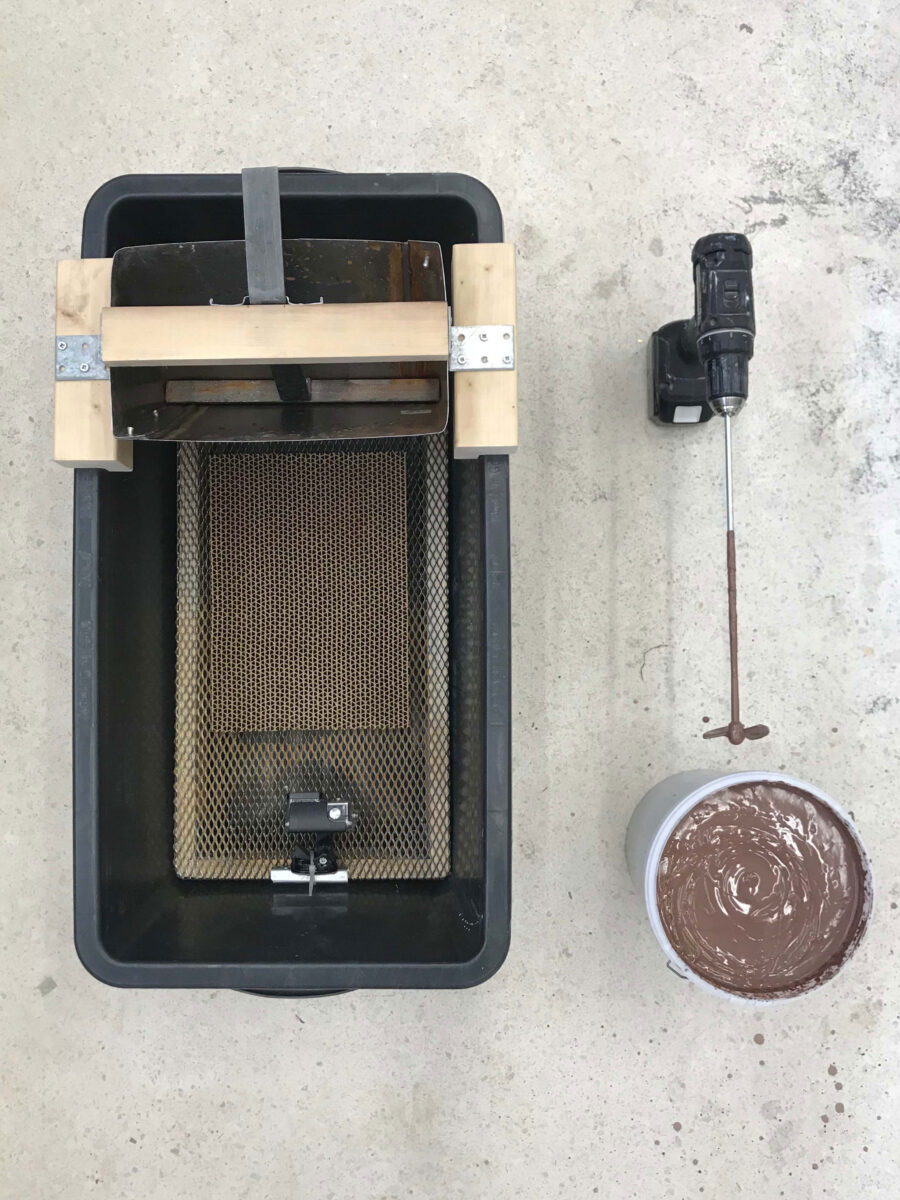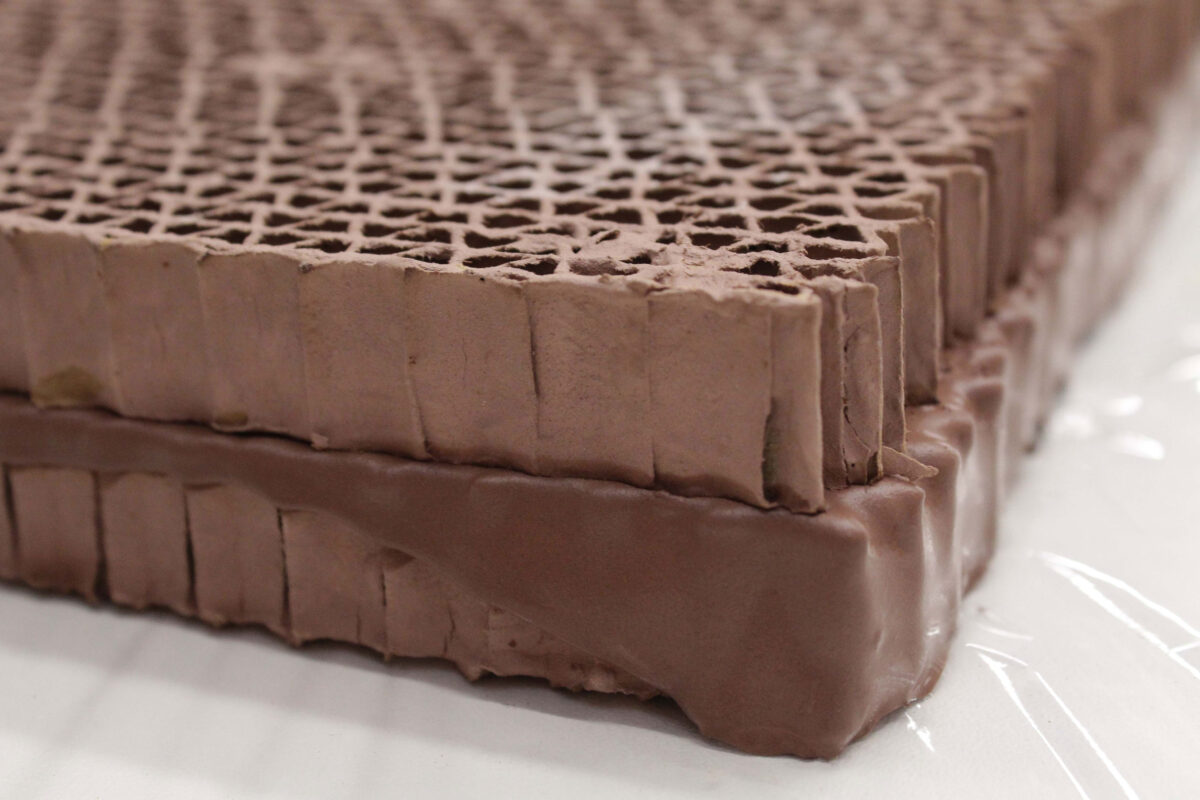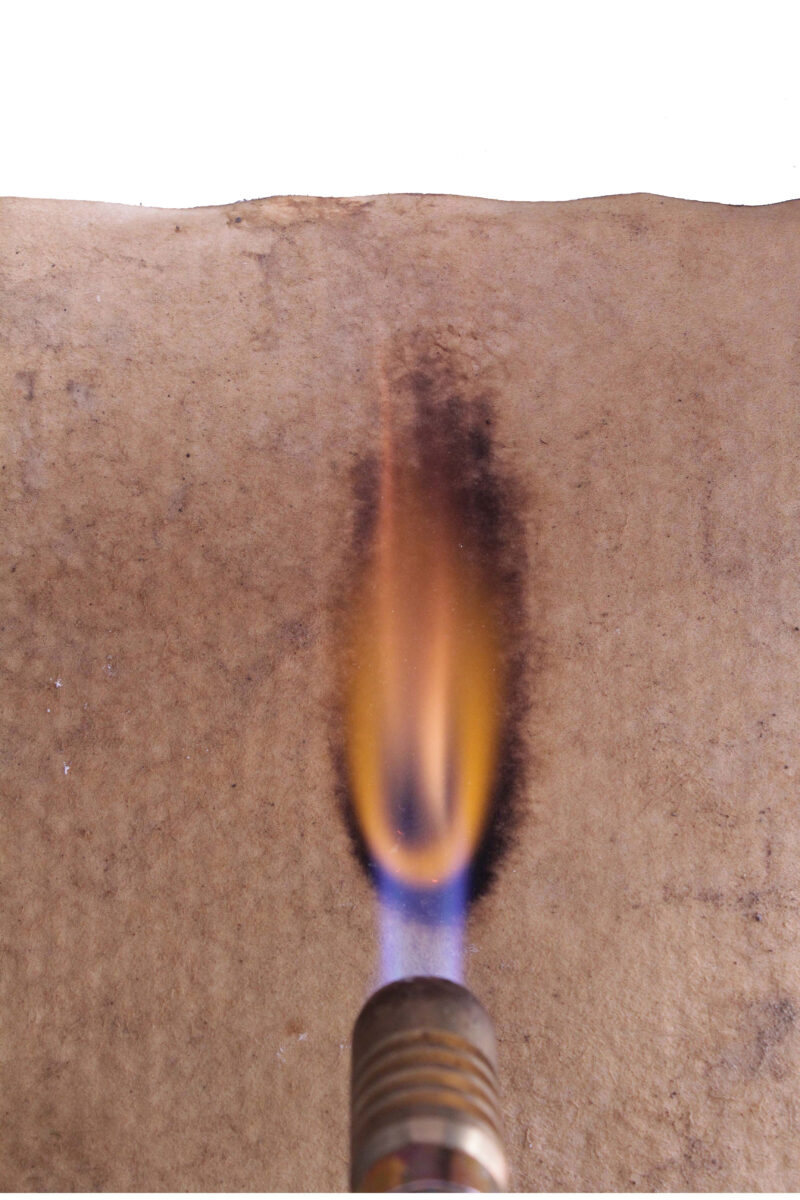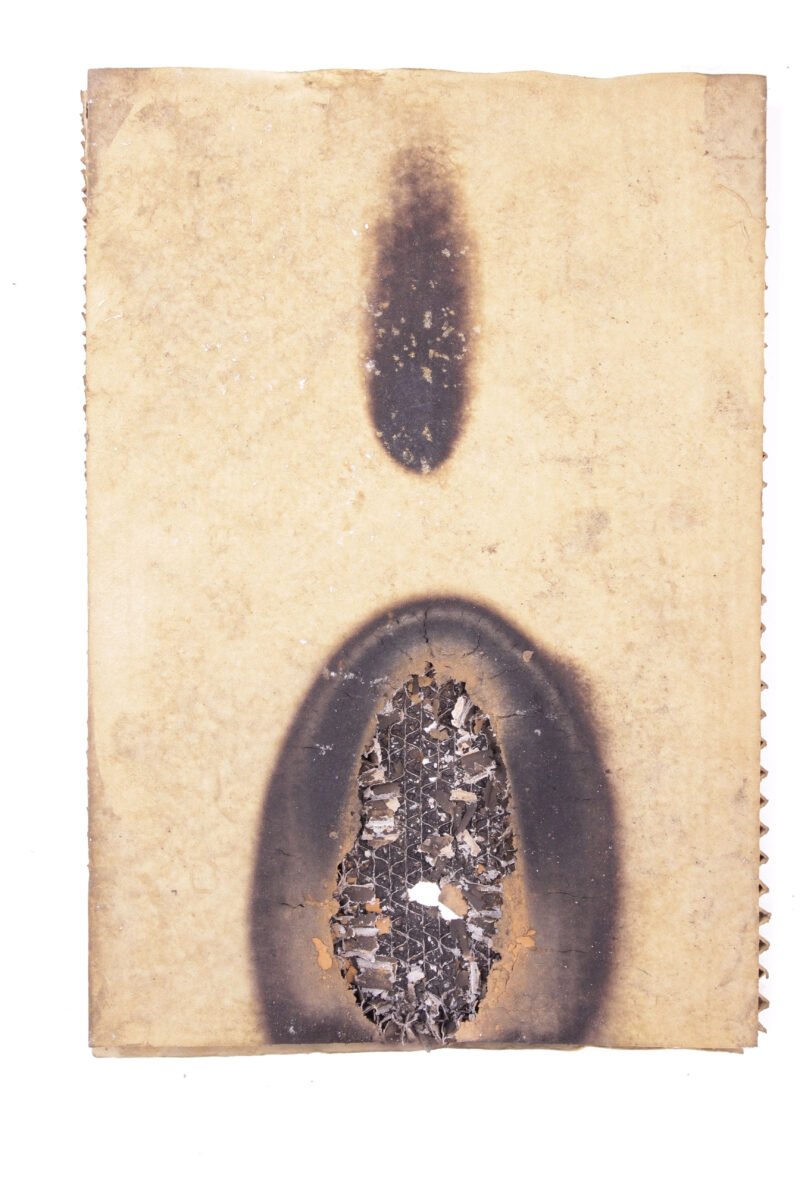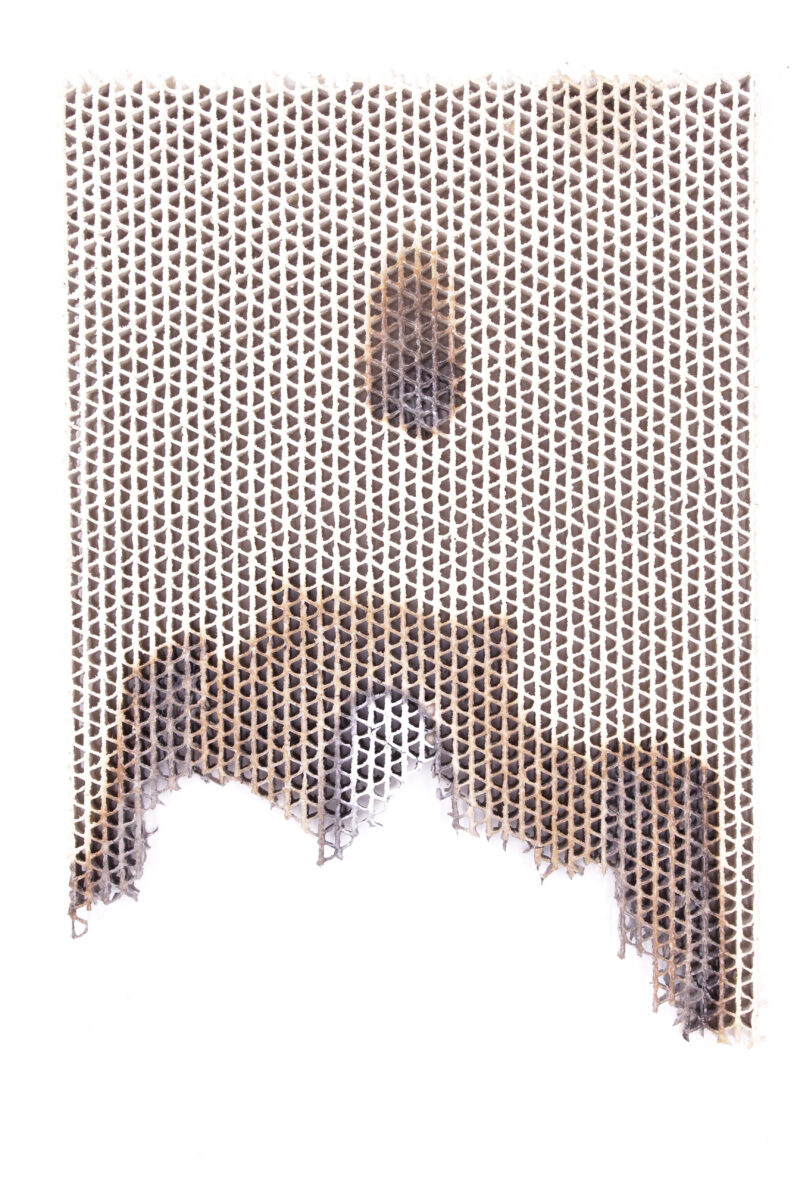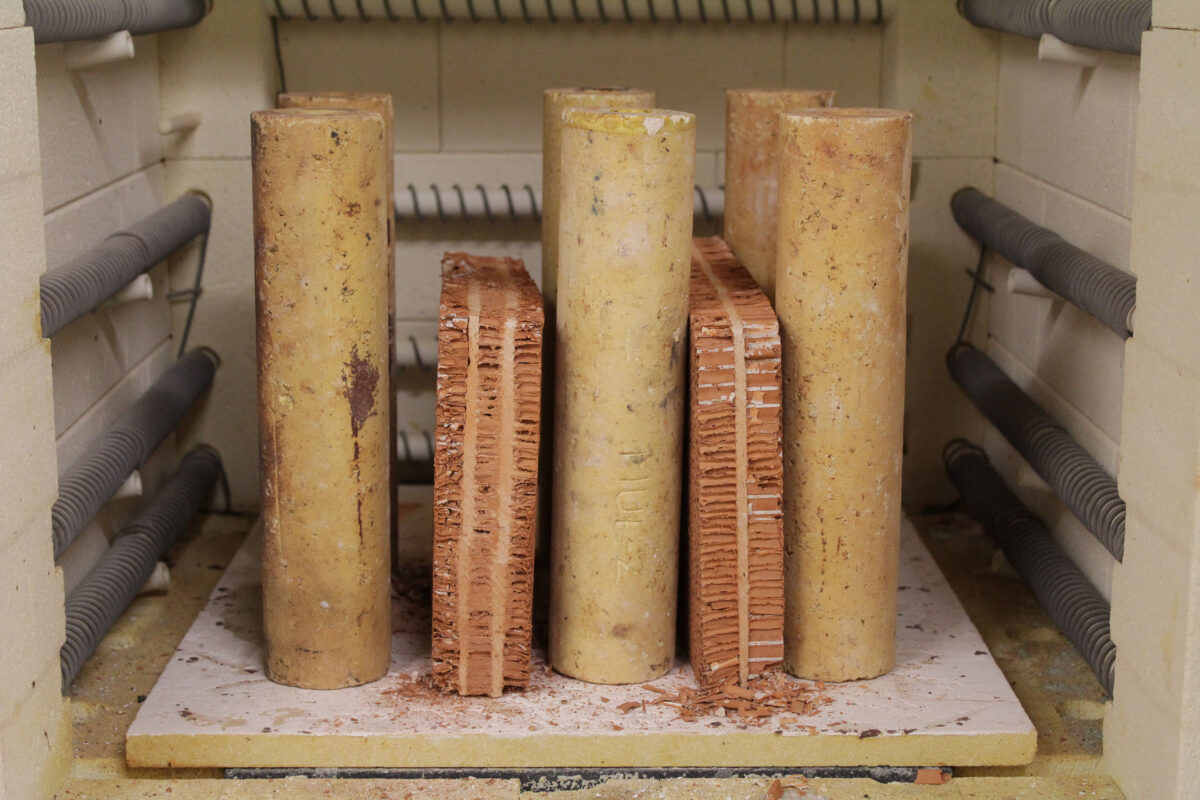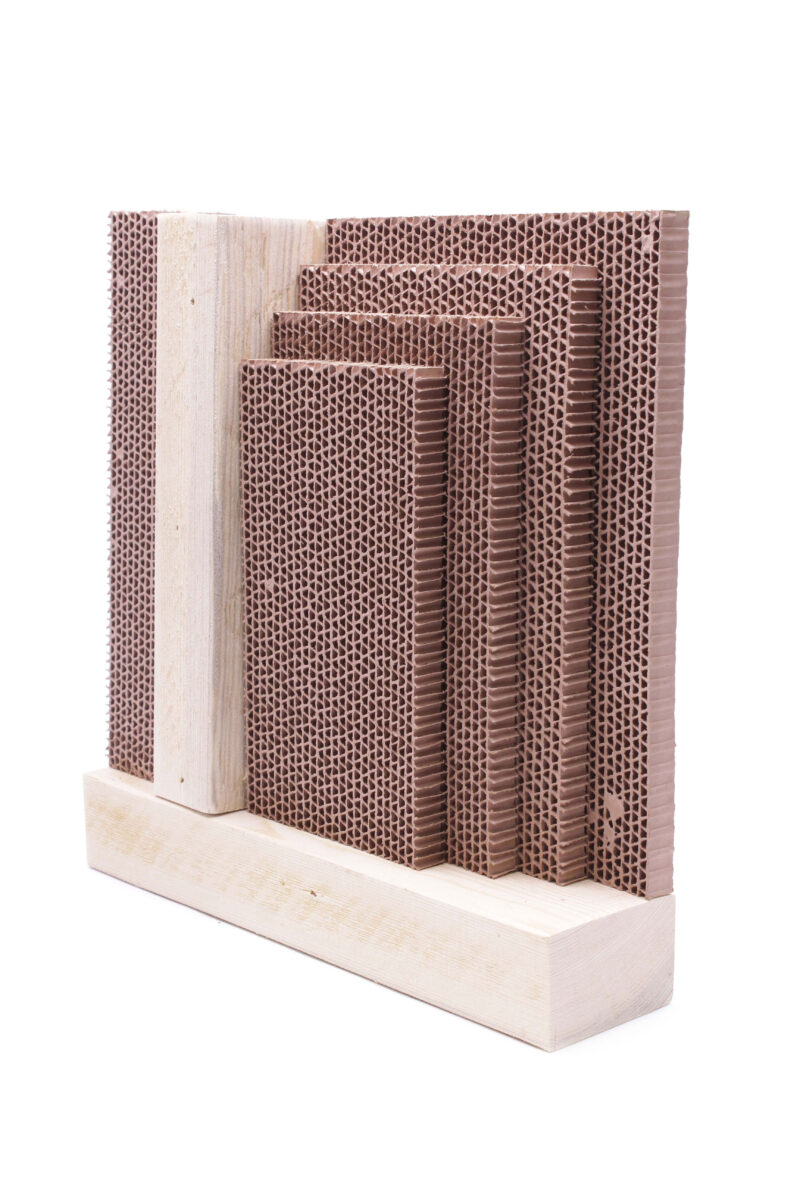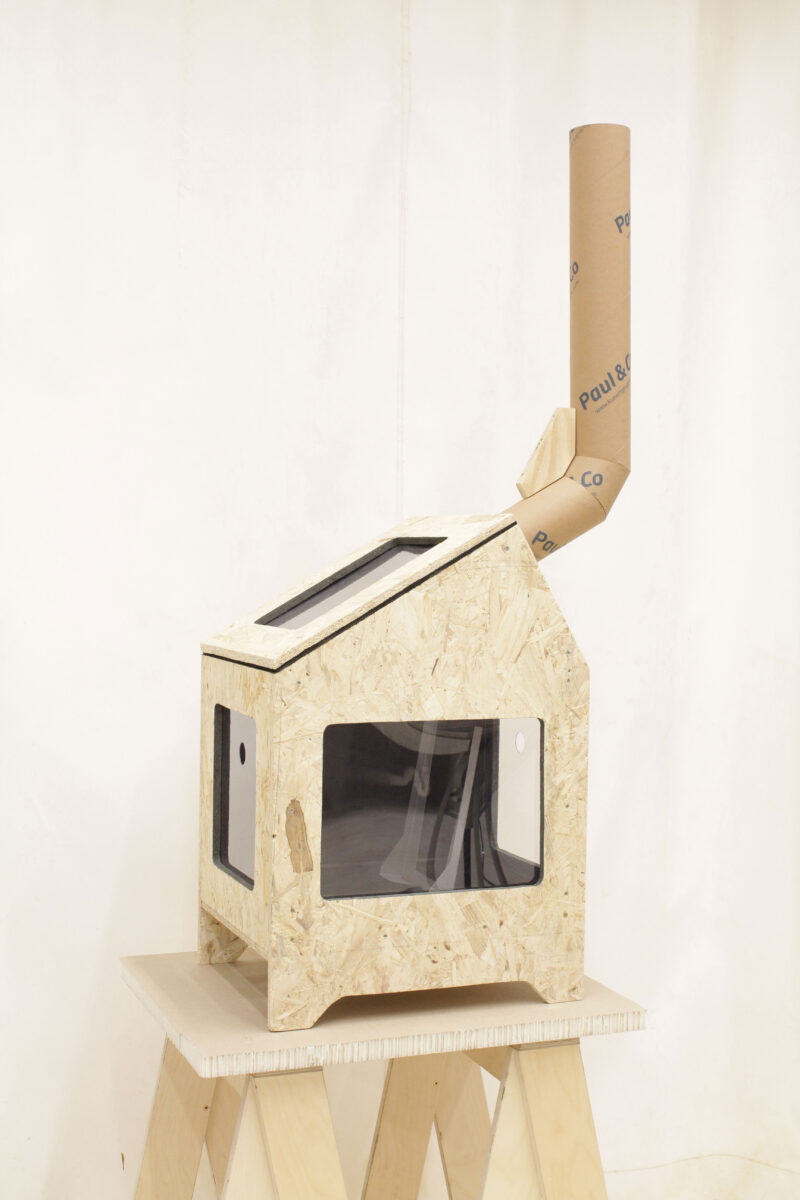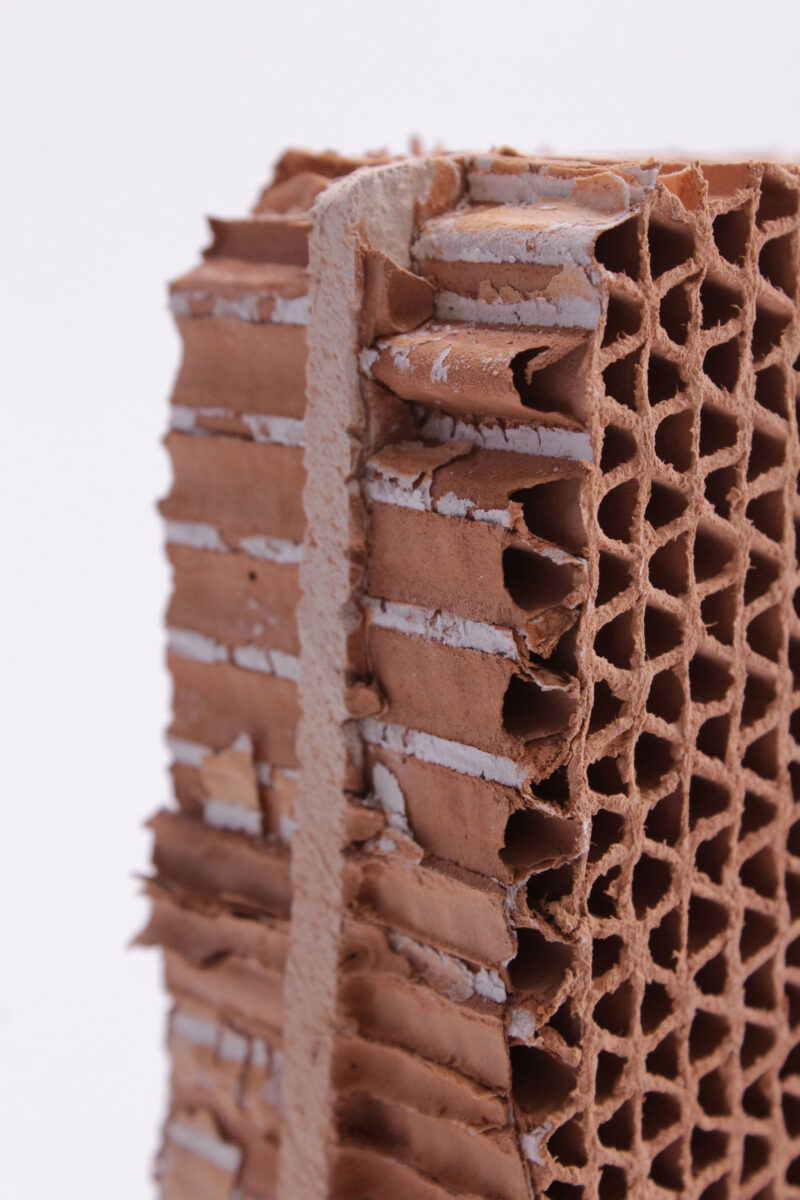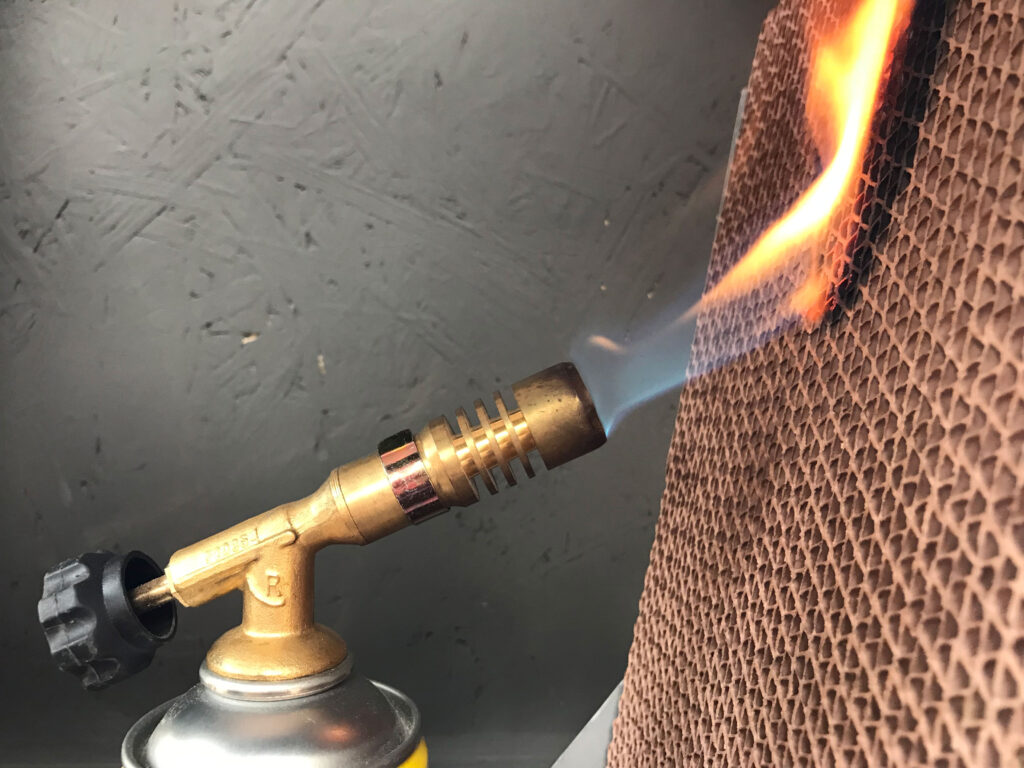
elements
Paper Composite
In order to be able to respond to the existing problems in the field of building materials, there is an urgent need for action to invent and research materials with new and improved
properties. In the future, the quality of a building material will be measured by its function and, as it were, its sustainability. Sustainability here means especially the way of disposal and perhaps also reusability of the components.
If you want to improve the properties of paper or cardboard – to „functionalize“ it – this is usually done by adding another material, an additive. The result is a composite of different raw materials. If the goal is to react sustainably, it must be possible to degrade and separate the raw materials or materials.
One of the important optimizations of the properties of paper is that of improving fire properties to a product with low flammability. Only with such a property is the unhindered use for the building industry, e.g. in light construction and interior
finishing conceivable. The improvement of the fire protection is conventionally conceivable with chemical additives and partly already possible, but here a separability is costly.
If this separation is more complex and thus more expensive than disposal, the composite materials usually end up in landfills or are „thermally disposed“, i.e. incinerated.
The research work on the honeycomb panel presents itself as a way to make the composite itself degradable.
The idea is simple: combine clay and paper.
The recyclability of the paper is maintained because clay is water-soluble and can be washed out of the paper fiber. In initial fire tests, this paper composite turns out to be flame-retardant and also heat-resistant.
This would make the composite an alternative approach to
making paper materials more resistant to fire.
If, in addition, the surface of the paper is such that two parts connect as a result of applying wet and dry processes to the fibrous material, this connection is a material-immanent bond without the need for additive materials. And it would mean that paper offers a potential that is a direct result of the specific material properties.
- research work of MSc Jannis Protzmann
